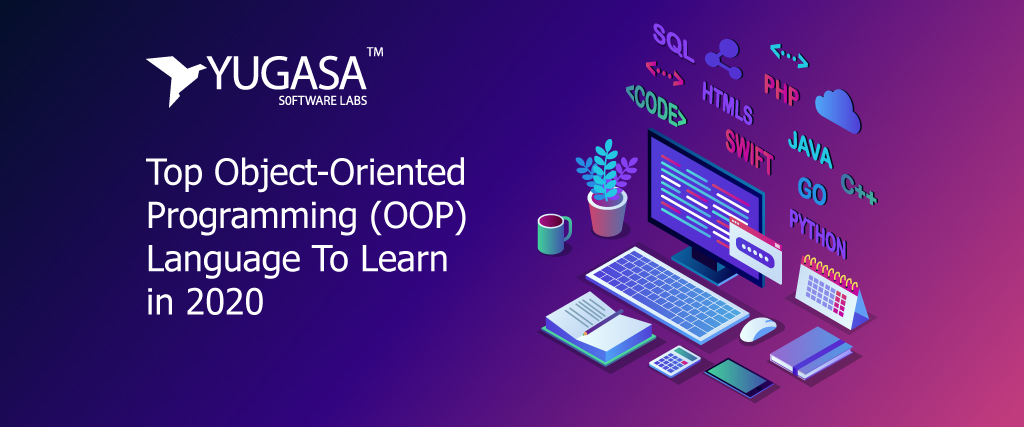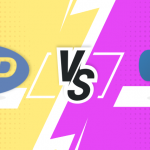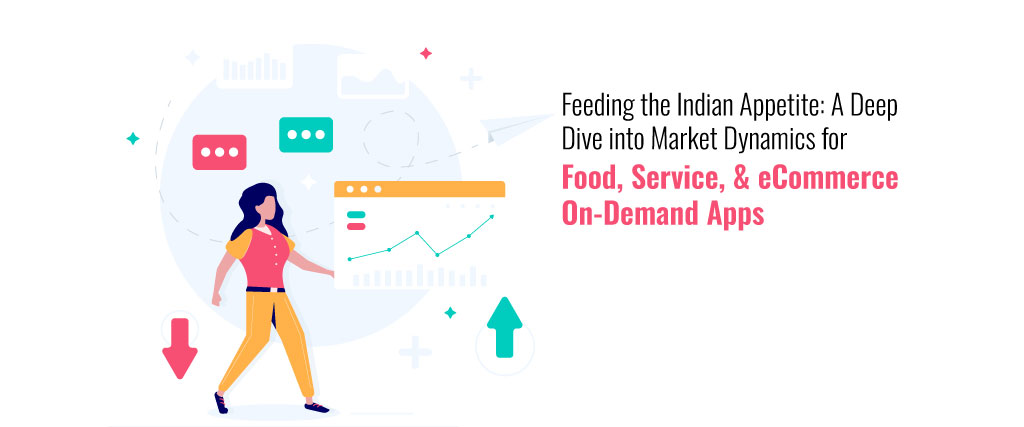Object-Oriented Programming 2022: After developing many projects, I came to the realization that each of them had problems with object-oriented programming, domain, architecture, encapsulation, inheritance, abstraction, and polymorphism.
These issues were not only challenging but also made my work cumbersome. Every time I had to make sure that I wasn’t missing anything, no errors, correct coding conventions, etc. in the OOP languages.
I face many problems with object-oriented programming so I became obsessed with finding a solution. This is the objective of this post; to introduce the mix of tools and programming languages to solve these problems.
Problems that occur while coding with Object-Oriented Programming Languages
The task of programming is rather challenging. Web developers, though, manage to express that idea in our code. But let’s face the reality too. Some basic problems I face during the development of software or application are miscommunication with the development team.
Technical issues that slow my work are legacy codes, code scaling and tricky codes that kick my ideas off are some of the consistent issues.
Too big data ruins the coding entirely, but I remain generous and assume that this data will yield some significant results. Managing this big data could end up with code that slows down your entire process of development.
Multithreading problems are quite obnoxious because for programmers it’s total chaos when they don’t work.
These unpredictable results, complications in testing, difficulties in identifying coding errors, complications in porting existing code, etc. all add up to my problem.
The major sources of challenges for programmers are closures in Java, Python, and Ruby. Object-Oriented Programming 2020, I can’t figure out many times what’s being closed in code and where are the closure boundaries in a given code.
Proper coding and user-centricity are not the options in Custom Software Development Services; they are the priority. What a user wants, you have to know. Ultimately the end-user will be using your software solution.
However, to achieve the project, the user should know what programming language and tools they need. And that is where the logic that is oriented towards objects comes into play.
The full concept of Object-Oriented Programming – Object-Oriented Programming 2022
Object-oriented programming languages enable programmers to work with real-life entities in a way that works. In OOP, objects are able to store different methods in the form of knowledge, data, and condition. In object-oriented programming each object has its own copy of the instance variables:
- Encapsulation: From the perspective of software development, encapsulation enables developers in other application development projects to quickly understand the code and reuse the code.
- Abstraction: It is a key component of good software design. Abstraction makes your application on any platform easily extendable.
- Polymorphism: An important feature of object-oriented programming that allows programmers to write programs that are easier for other projects to create and reuse.
- Inheritance: This makes coding more flexible, which tends to lead to better code organization in smaller and simple units.
Other advantages of object-oriented programming languages are: you can use it for thorough data analysis of types of web applications, less development time, accurate coding, easy testing, reusability, debugging, less data corruption, and maintaining.
OOP languages offer ease and transparency for less complicated applications. Analyzing the right OOP language for the development process is something that can make coding hard for programmers.
Object-Oriented Programming 2022 -Top 5 Object-Oriented Programming Languages
1. JAVA
Java is much more than just a high-level programming language that is widely known for enterprise-grade application development and is the most demanded object-oriented programming language.
With Java, developers have everything they need to build Web apps and software solutions on their fingertips.
Why JAVA?
It is because of the Java motto “Written once, run anywhere” that makes Java web systems and applications powerful, portable, and scalable enough to build. Java has an excellent ecosystem for development, with only a few languages.
When talking about an object-oriented programming concept, Java is about 100 percent of the concept. With modular software, flexibility, extensibility, and an easy development process, it offers all the advantages of high-level object-oriented programming languages.
Java libraries, frameworks, on all the platforms on which it runs, make Java readable easily. Also, the core concept of the high-level programming language that executes, loads, and verifies Java code is JVM (Java Virtual Machine).
2. PYTHON
Python codes are not completely object-oriented, but they are supported by the language. Python links the concept of object-oriented programming with its combination of readability, flexibility to create complex operations in the data science.
No doubt according to the Stack Overflow survey, Python is one of the most loved programming languages of the year. It is object-oriented, cross-platform, and features a vast set of libraries including Django, Theano, TensorFlow, Scikit-Learn, Keras, PyTorch & Pandas.
Why PYTHON?
What do you do when you need to add something complex to your Python application? How would you know which element should be present in the development of your application?
What if you had tens of thousands of animals? Do you have information about the animal’s name, type, and color?
These can all be solved through Python Classes used to define data-structures about something specific.
Sample code for Python:
class Animal: pass You may also use Instance attributes to define characteristics here: class Bird: # Initializer / Instance Attributes def __init__(self, type, color): self.type = type self.color = color
I hope you have some clarity on why the OOP language is considered to be Python. It works on the concept of the fundamentals of object-oriented programming. And, in a variety of Python App development circumstances, it will be valuable to you.
3. GOLANG
Go is new in the top object-oriented programming languages list. Developed by Google in 2007, there is much discussion surrounding whether or not Go is an object-oriented programming language.
I want to make clear to you that there is nothing like an object or class in the Go programming language, but it has some analogous structures. So I can say Go is one of the most popular object-oriented programming languages to some extent.
Why GOLANG?
Below is a sample code of the OOP in Golang:
type Animal struct { Name string mean bool } type Elephant struct { Basics Animal Strength int } type Lion struct { Animal Strength int }
You can see three structures here that can be seen in any example of object-oriented programming. Here we have a base structure under the base structure (Elephant, Lion) for the Animal and two other structures.
I would like to say here that Go took the best part of the programming language oriented to the objects. So, leave the rest of the stuff out and get the advantage of writing polymorphic code in Golang.
4. C++
Languages based on C are not object-oriented. It is however possible to write object-oriented code in C, C++, and Object C. I will talk about C++ as an OOP language here.
C++ is a powerful programming language of high level which can interface with almost any programming language. Programmers love C++ for its code-simplifying pointers by creating “address” in the space where coding data is present.
C++ has won many hearts with all these features and capabilities. Let me make it clear, however, that the main purpose of C++ was to introduce the idea of object-oriented programming that includes concepts such as data binding, inheritance, and polymorphism, abstraction, and encapsulation.
Why C++?
Sample code in C++:
//Class name is Vehicle class Vehicle { //Data members char name[20];
int speed; int performance; public: //Functions void brake(){ } void slowdown(){ } }; int main() { //Volkswagen is an object vehicle Volkswagen; }
We have an Automobile class here with data members that are also referred to as variables such as speed, performance, cost, and functions such as slowdown(), brake().
Thus, you can build programs using classes with C++ object-oriented programming capabilities, objects that save your development time and provide you with greater productivity.
5. RUBY
Ruby is a pure OOP language that operates on objects. Those objects are all values in Ruby. It makes more sense to call Ruby a high-level, efficient programming language.
Codes in Ruby are designed for the happiness of the developer. In addition to all this, Ruby is easy to use with its framework such as Ruby on Rails, which will allow you to develop web applications by leveraging pre-existing code collection.
That means you can use pre-existing codes to create what you want to code, instead of creating an entirely new application on Ruby from scratch level.
Why Ruby?
In Ruby, let’s see how objects are created:
class Vehicle def initialize(name, color) @name = name @color = color end def get_info "Name: #{@name}, and Color: #{@color}" ended my_vehicle = Vehicle.new("Supercar", "Blue")puts my_vehicle.get_info
In the above code, we have a class named Vehicle with two initialize and get info methods. The best part here is that it does not initially declare the variables in Ruby.
Other coding steps in Ruby will include data access, class Methods, class variables, class inheritance, modules, and constant scope.
Conclusion
Now, by building applications and software solutions, you can go deeper and learn more about these top object-oriented programming languages to follow in 2020.
Remember that you do not spend time learning said materials while deciding on the best object-oriented programming language. You’ll never make a decision this way.
Find a reliable source of information or a service that can help you work in the right programming language and you’re just going to do fine.
Read More: TOP PROGRAMMING LANGUAGES FOR BLOCKCHAIN APP DEVELOPMENT – A COMPLETE GUIDE
























